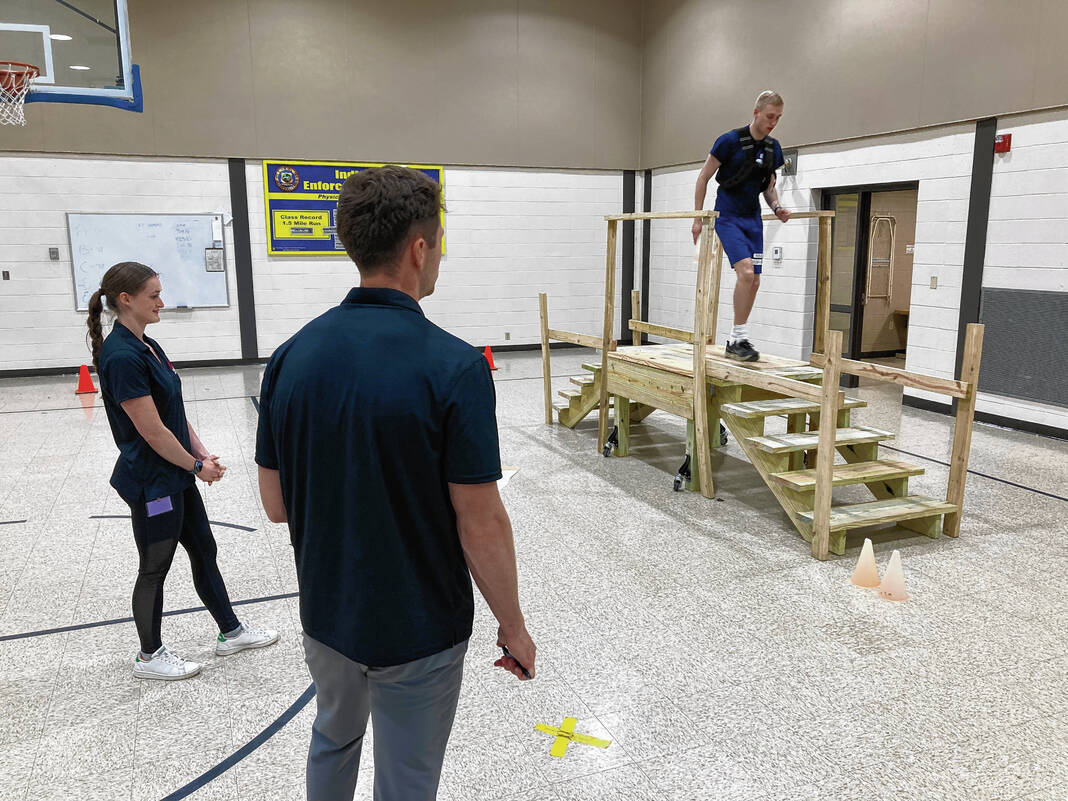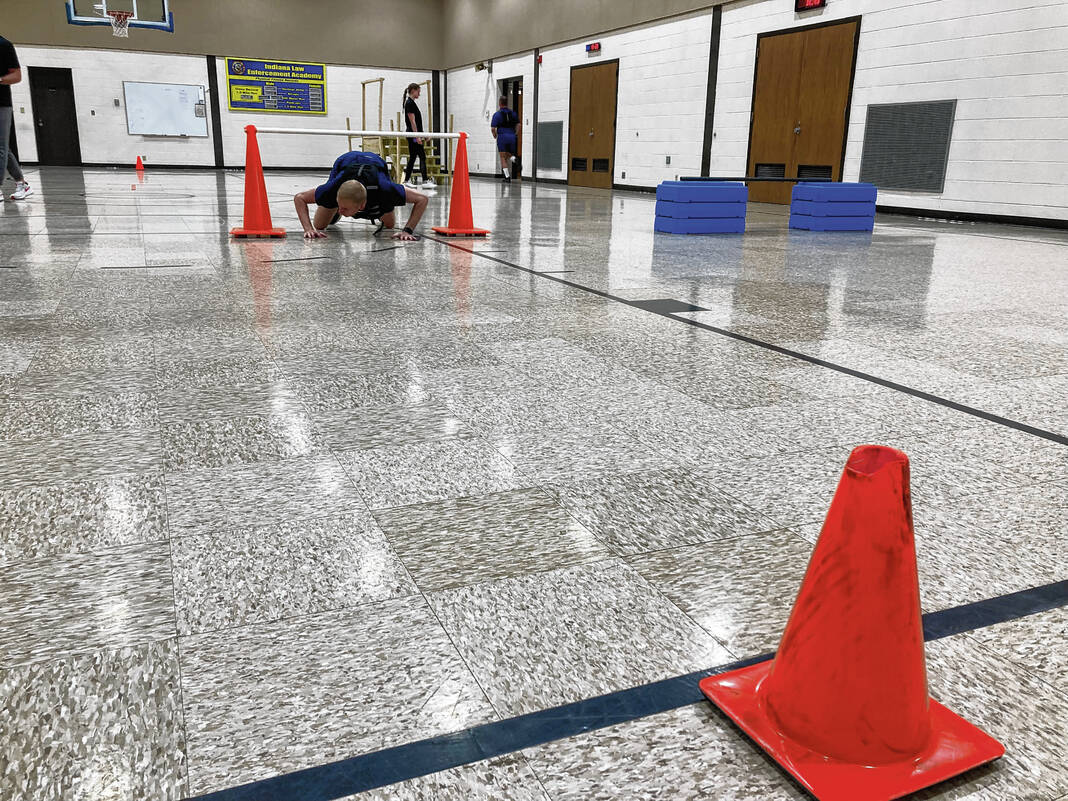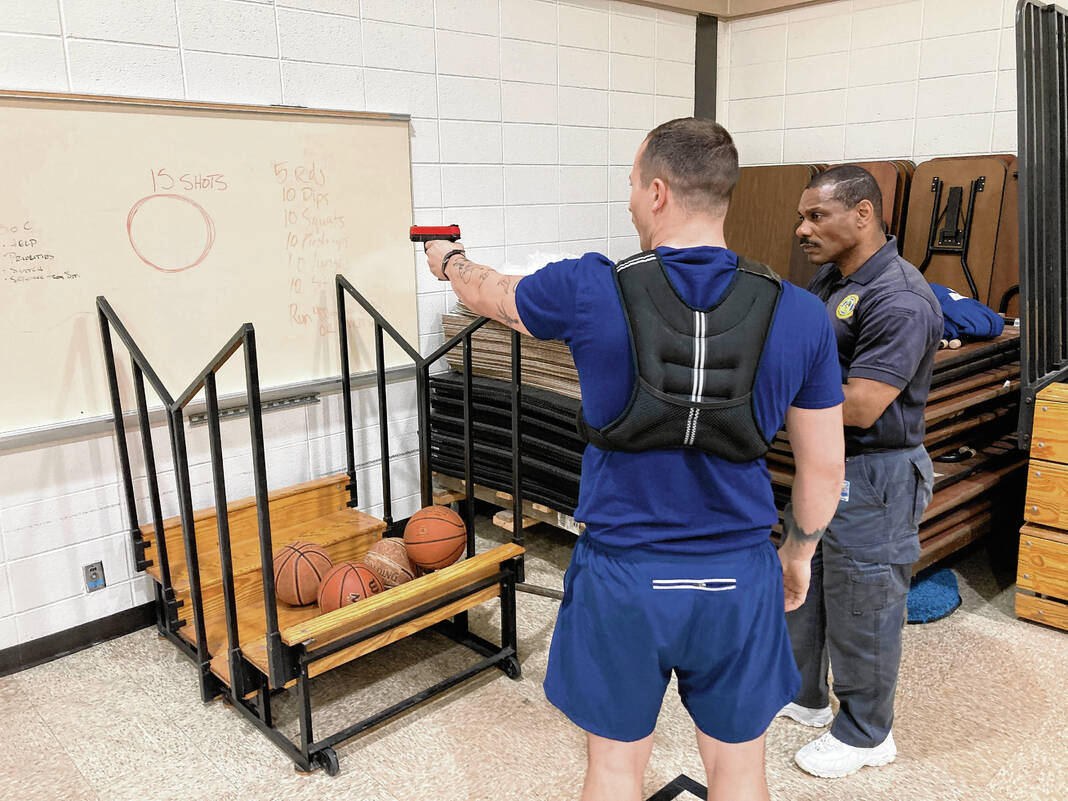
An Indiana Law Enforcement Academy recruit moves a dummy during a physical test. The academy has partnered with the University of Indianapolis to update their physical fitness test. Photo provided by UIndy
Physical fitness standards for Indiana Law Enforcement Academy trainees will be updated through a partnership with a southside university.
The Indiana Law Enforcement Academy has partnered with the University of Indianapolis to revamp their physical fitness standards for recruits undergoing training for police departments, sheriff’s offices and law enforcement agencies across the state — including Johnson County. The design of the new test is the direct result of the partnership between the academy and kinesiology and exercise experts from UIndy, university officials say.
“The purpose of the Indiana Law Enforcement Academy is to prepare Hoosier men and women to be the best law enforcement professionals that they possibly can be. Updating our physical fitness standards will make our recruits even better prepared,” said Tim Horty, executive director of the ILEA, in a statement. “I am thankful for the partnership with the University of Indianapolis to create and validate this test which will result in a better officer and a safer Indiana for everyone.”
With updated standards, the goal is to both better reflect and be more directly connected to many of the 600+ essential job tasks identified by Indiana law enforcement agencies.
Some elements of the new timed test include requiring trainees to climb over a 4-foot-tall chain link fence, drag a 185-pound person for 50 feet — as if they were rescuing someone, ascend more than three flights of stairs and jump over a simulated ditch or culvert. This is all while wearing a weighted vest to simulate the weight of the typical uniform and equipment, according to UIndy.
For more than a year, UIndy associate professors of kinesiology Dr. Nathanial R. Eckert, Dr. Trent E. Cayot and Dr. Mindy Hartman Mayol have been working to create the new test. They supervised a team of masters in exercise science students who analyzed almost 10 years of data to better understand the physical capabilities of past Basic students to help meet the needs through the new test, according to the university.
The students also partnered with the ILEA to help with the day-to-day fitness training of Basics throughout the year, university officials said.
“This is a perfect example of the University of Indianapolis mission which places great value on experiential learning as well as service for impact,” said Dr. Nathanial Eckert. “To be able to serve the Indiana Law Enforcement Academy as a trusted partner by designing a meaningful test is incredibly rewarding, both for me personally and the students who have gained great experience that cannot be replicated in the classroom.”
Current entry standards are made up of five tests, including a 1.5-mile run to measure aerobic capacity and push-ups to measure upper body strength, according to the ILEA. The academy has had a lot of people flunk out during the 1.5-mile run when in real life, officers aren’t doing 1.5-mile foot pursuits anymore, said Greenwood Mayor Mark Myers, a member of the academy’s board.
“With all the technology we’ve got with the use of canines, with tasers, with everything else, we’ve got other tools that have been introduced to law enforcement,” Myers said. “It makes a lot more sense that they’re doing a physical this way.”
Dragging people and jumping certain distances are real-life things that happen not only in law enforcement but public safety in general, Myers said.
Officials must do this right, said Lt. Patrick Cousin, who oversees the ILEA’s Physical Fitness program. They need to make sure they have a test where they have “great confidence” it will accurately ensure a candidate will be able to do the physical requirements of the job, he said in a statement.
Myers thinks the updated standards will help police departments across the state in the long run. They will be able to get more recruits that are capable of doing the job, including those who maybe couldn’t do the 1.5-mile run in time or do one extra push-up, he said.
Validation for the new test is underway now, with officials utilizing recruits undergoing basic training, and who qualified for the ILEA using current standardized tests. The new test, like the current ones, will be published on the ILEA website once the validation process is complete and the ILEA transitions to it.
The ILEA hopes to transition to new standards within the next year, officials said.











